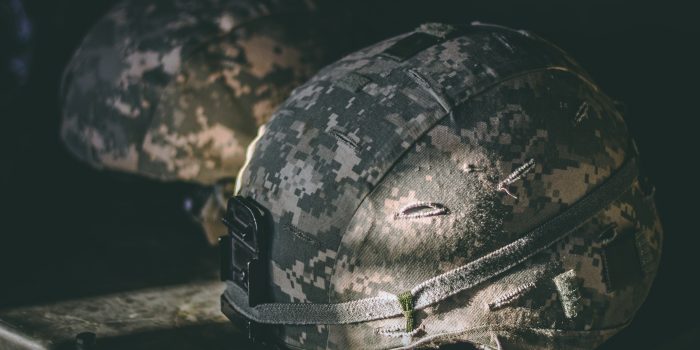Roughly 200,000 service members will leave military service this year, eager to start a new chapter in the civilian world after being part of the less than one-half percent of Americans volunteering to serve our Nation. After many years of top-notch training aimed to prepare them for the rigors of war and the challenges of peacetime, are these warriors equally prepared to handle the challenges they will experience in their transition to civilian life? Will the Department of Defense spend an equal amount of time, money, and resources to help our veterans exit service as they did to recruit them? With many veterans reporting feeling surprised by transition challenges and ill-equipped to handle them, it seems there is a need to improve the current programs in place.
Much of the current transition training focuses on job placement. While this is undoubtedly a top concern for exiting service members, it is not the only challenge that transition brings. Many veterans report feeling a sense of loss of identity, community, and purpose. Difficulty accessing medical care and benefits are common challenges, along with the strain on relationships caused by the stress of transition. For those who are successful in finding a post-military job, many feel unfulfilled and over-qualified for it. When the transition goal is job placement, veterans may feel that there is “something wrong with them” when they experience dissatisfaction with their new civilian life.
The Department of Defense’s program for assisting service members with their transition to civilian life is the Transition Assistance Program (TAP). The current program (updated in 2019) consists of individualized initial counseling, one day transition and financial planning, briefings from the Department of Labor and the VA, and a two-day workshop focused on personal post-military goals (employment, education, or entrepreneurship). TAP is a mandatory program for all separating service members, although each service branch may add its specific components1.
The History of Transition Assistance

Photo by Haley Hamilton on Unsplash
WWII and Vietnam Era Veterans
Returning home from WWII was a joyful time. Soldiers were welcomed back to their communities as heroes with parades. Although they returned to a nation that was not as prosperous as when they entered the war, the government took significant measures to ease their transition back to civilian life. The GI Bill was created under the Servicemen’s Readjustment Act of 1944 and provided veterans with financial aid for home, business, medical care, and education costs. In fact, a veteran could attend any college they chose entirely free of cost with an additional allowance for living expenses2.
The Vietnam veteran received a much less welcoming homecoming, sometimes met with hostility and hatred from antiwar protestors. Most commonly, they received chilly receptions full of indifference and uncomfortableness. Those who did not go to war avoided the topic and didn’t know how to approach those returning from Vietnam, leaving these veterans to feel isolated and misunderstood. They even lacked support from older WWII and Korean war veterans who viewed the Vietnam War as a failure. The swift evacuations from the battlefield meant many injured soldiers found themselves at home within days, leaving no time for readjustment from the battlefield. Advancement in battlefield emergency medical care led to an influx of severely disabled veterans unable to work when returning home.
The government did not offer the lush benefits of the WWII era to Vietnam veterans. After spending millions on the failing war, there was no money left to assist veterans. As a result, veterans received a meager $200 per month for living expenses, which didn’t come close to what they needed to survive. To make matters worse, the government often didn’t recognize veterans’ health problems as service-connected, denying them assistance and treatment3.
Gulf War Veterans to Current
The National Defense Authorization Act of 1990 established the military Transition Assistance Program (TAP) to help service members transition to civilian life. Its creation was in response to military members involuntarily separated due to drawdowns in the 1980s as well as those returning from the Gulf War. Initially focused on job placement, the program helped veterans translate their military skills to skills valued in the civilian sector. Through instruction led by the Department of Labor and the VA, this initial program provided a starting point in offering much-needed support to our nation’s veterans.
The program’s first improvement came in 2011 through the Veterans Opportunity to Work (VOW) to Hire Heroes Act. The most notable improvement was making the program mandatory to all separating service members (with few exceptions). The revised program focused on career readiness, individualized transition plans, verification of program completion, and an earlier starting point for planning. While these changes made minor improvements to the baseline program, it was still narrowly focused on job placement skills4.
The current version of TAP was last updated in 2019, giving the transitioning service member the ability to choose one of three post-military goals: employment, education, or entrepreneurship. Participants attend a two-day workshop specific to this post-military goal giving them more technical information for their unique transition plan. Another change to this program is the timeline for starting the transition process. All separating service members must begin pre-separation counseling no later than 365 days before leaving service1.
Shortfalls of the Transition Assistance Program
While TAP seems to help veterans obtain post-military employment, with more than half of them finding work within six months of separation, the program does not prepare veterans for other aspects of their transition. Veterans face some common challenges: poor health, significant feelings of loss and culture shock, and poor social and family relationships. Nearly half of veterans say their transition to civilian life has been difficult and that the military did not prepare them well for the transition5. After years spent in the military’s collectivist structure, veterans don’t know how to operate in the less structured and less supportive civilian environment. The most important and influential component of the military culture that veterans miss is the camaraderie among fellow service members.
Unlike any other life transition, what makes military transition unique is that so many changes are happening at once: career, finances, living arrangements, and social circle. And through those various changes, we see that transition is mostly psychological and cultural. The transition should not be treated as a single event but as an evolving process that requires support throughout the entire time frame. The current program does not spend enough time preparing service members for their departure from the military. As Bethanie Spangenberg from Valor 4 Vets notes, “They spent six years training my husband, a Marine Corps Infantryman, the strategies of war and how to kill, but only two weeks to undo that training.”
Recommendations for Program Improvement
The Department of Veterans Affairs Center for Innovation (VACI) acknowledges that “more understanding and a paradigm shift in approach” is necessary to serve our veterans better. The program needs to be introduced sooner and needs to continue past the date of separation. Additional training is required to make service members aware of the effects of military transition on physical and mental health, family life, self-identity, and social connectedness. Much like the training warriors receive before deploying overseas, cultural training to re-enter their unfamiliar civilian culture should be given6.
A study published in Frontiers in Psychology offers a few program improvement suggestions. The first is establishing a sponsorship program that matches volunteer veterans to serve as sponsors for newly separated service members. The practice of sponsorship is widely used in the military to ease the adjustment of entering a new assignment. Adding this to transition assistance makes perfect sense. The ETS Sponsorship Program is now in the implementation stage, with assistance from the VA.
Another suggestion is to expand TAP to two phases, with Phase One being the current program and Phase Two, a program that would occur in the community after the service member separates. Positioning resources in the community is critical to ongoing support. Many veterans don’t know where to turn for help or are overwhelmed by the 27,763 registered veteran non-profit organizations. How do they decide which organization to contact? Mentors and advisors can help lead them to the resources that can help them best.
Lastly, an increased effort on enrolling veterans in the VA Health System is necessary. Only 21.6% of veterans enroll and use the VA Health System, with 42% stating they were unaware of their eligibility or the VA’s benefits. Improved customer service is also a priority according to the 77% of veterans who list it as a much-needed change. More than half of veterans identify lousy customer service as the primary reason they do not use VA services7.
The Way Forward

It’s clear to see that the current TAP is a narrowly focused and inadequate program. While finding employment is a top concern for transitioning service members, it is merely one piece of a puzzle of challenges that veterans face. Military transition is intrinsically tough. We need to prepare our service members for the wide range of challenges they will face instead of allowing them to feel blindsided, confused, and isolated. Training them for civilian life’s cultural nuances will improve their overall life satisfaction for this much-anticipated chapter in life. This is the type of military transition that our veterans deserve.
____________________________________________________________________________
References
1 DoD Transition Assistance. (2019). Changes to DoD TAP: Here’s What You Need to Know about the October 1, 2019 Roll Out.
2 Alex D’Ambrosio and Tom Ciarleglio. A Quieter Life: Coming Home from WWII. Wayland High School History Project
3 Encyclopedia.com. Coming Home: Vietnam Veterans in American Society.
4 James Whitworth, Ben Smet, and Brian Anderson. (2020). Reconceptualizing the U.S. Military’s Transition Assistance Program: The Success in Transition Model. Journal of Veterans Studies
5 Pew Research Center. (2019). The American Veteran Experience and the Post-9/11 Generation
6 VA Center of Innovation. (2017). Transforming Veterans’ Experiences During Military to Civilian Transition: Gaps and Opportunities.
7 Geraci et al. (2020) Expanded Roles and Recommendations for Stakeholders to Successfully Reintegrate Modern Warriors and Mitigate Suicide Risk. Frontiers in Psychology.







